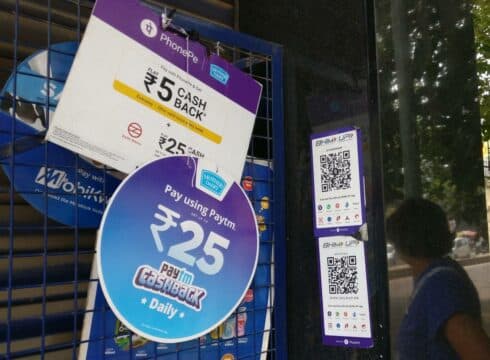NPCI and Kansas-based fintech company Euronet have submitted a joint bid to the Central Bank of Myanmar for building the country’s proposed Real-Time Retail Payments System
NPCI has been eyeing the Asian market as Singapore, Malaysia and the UAE are looking to build digital payments networks
In November last year, the FICCI had signed an agreement with the Singapore Fintech Association to take UPI to overseas markets
Inc42 Daily Brief
Stay Ahead With Daily News & Analysis on India’s Tech & Startup Economy
Buoyed by the success of its Unified Payments Interface (UPI), which is on course to clock 2 Bn transactions this month, the National Payments Corporation of India (NPCI) is exploring opportunities for exporting the technology overseas.
NPCI subsidiary NPCI International (NIPL) and Kansas-based fintech company Euronet have submitted a joint bid to the Central Bank of Myanmar for building the country’s proposed real-time Retail Payments System, as well as a QR Code Generation and Repository System.
NPCI has, of late, been eyeing the Asian market where several countries such as Singapore, Malaysia and the United Arab Emirates (UAE) look to build the requisite digital infrastructure to facilitate quick and efficient digital payments.
However, sources told Economic Times that NPCI’s bid could face competition from global payments giants such as Visa and Mastercard, who have apparently shown an interest in the project.
It is worth noting that NPCI had last year forayed into the Singapore digital payments market.
In November last year, the Federation of Indian Chambers of Commerce and Industry (FICCI) had signed an agreement with the Singapore Fintech Association (SFA) to take UPI global. The implementation of UPI in Singapore is expected to solve the scarcity of payments options for Indians travelling abroad due to currency conversion and non-availability of credit or debit cards.
NPCI has been working with Singapore’s Network for Electronic Transfers (NETS) to jointly implement UPI-based QR code payments terminals at various points of interest, including airport terminals.
In August this year, NPCI incorporated its subsidiary, NPCI International Payments Limited (NIPL) to popularise digital payments technologies such as UPI and RuPay cards platform abroad.
Google Talks Up UPI To US Fed Reserve
Global companies have also taken notice of the success of UPI. In December last year, Google had recommended to the United States Federal Reserve Bank that it should develop a digital payments system that is similar to UPI in India.
Google’s recommendations to the US Federal Reserve came in its stakeholder comments, for the bank’s plans of introducing FedNow, an instant payments service whose targeted launch is in 2023-24. Google is understood to have told the US Federal Reserve that since UPI had been thoughtfully planned, critical aspects of its design led to its success.
UPI Closes In On 2 Bn Monthly Transactions
Earlier this month, Inc42 reported that UPI had recorded 1 Bn transactions in the first half of October. Having recorded 1 Bn transactions in the first 15 days of this month and with festive season sales kicking off for major ecommerce players in India, UPI could achieve the elusive feat of 2 Bn monthly transactions in October, something it has never achieved since the payments system came into existence in 2016.
The 2 Bn monthly transactions mark would also mean a 2X year-on-year (YoY) growth for the UPI payments systems, which had recorded 1 Bn monthly transactions for the first time in October last year.
The UPI monthly transaction volume had dipped below the 1 Bn mark in April this year, but since then, has witnessed a significant upswing as people have turned to digital payments amid the Covid-19 pandemic when lockdown and physical distancing protocols are in wide acceptance. Last month’s total volume of transactions of 1.8 Bn through the UPI system was a 10.3% hike compared to August when UPI had recorded 1.61 Bn transactions.
Earlier this month, the Reserve Bank of India (RBI) said that digital payments have grown at a compounded annual growth rate (CAGR) of 55% over the past five years, between financial year (FY) 2015-16 and FY 2019-20.
Even as NPCI develops plans for taking UPI overseas, the digital payments network and its developer continue to tackle several issues at home.
UPI’s Room For Improvement
While UPI has undoubtedly solved a lot of headaches for merchants and individuals, it is not exactly the most profitable operation from a business point of view. In July, Inc42 reported that NPCI had asked the Indian government to bring back the merchant discount rate (MDR) for UPI-based digital payments.
MDR is the fee collected by banks and levied by merchants processing the transactions, which is then shared among the acquiring bank, fintech partner, the issuing bank and NPCI.
The fee was waived off last year by the government on transactions on the UPI network and those done through the RuPay debit card modes. This was done to incentivise small businesses to make a switch to digital payments. But as a result of this move, many UPI apps have been left with very little revenue despite the fact that they have to spend to acquire users and gain repeat users.
Meanwhile, there has been a surge in the rate of failed transactions through the UPI network. About 10 of India’s top 30 banks recorded a failure rate of over 3% for UPI transactions in September 2020. In comparison, the technical decline rates for most of the top thirty banks stood at less than 1% before July, according to NPCI data.
{{#name}}{{name}}{{/name}}{{^name}}-{{/name}}
{{#description}}{{description}}...{{/description}}{{^description}}-{{/description}}
Note: We at Inc42 take our ethics very seriously. More information about it can be found here.


